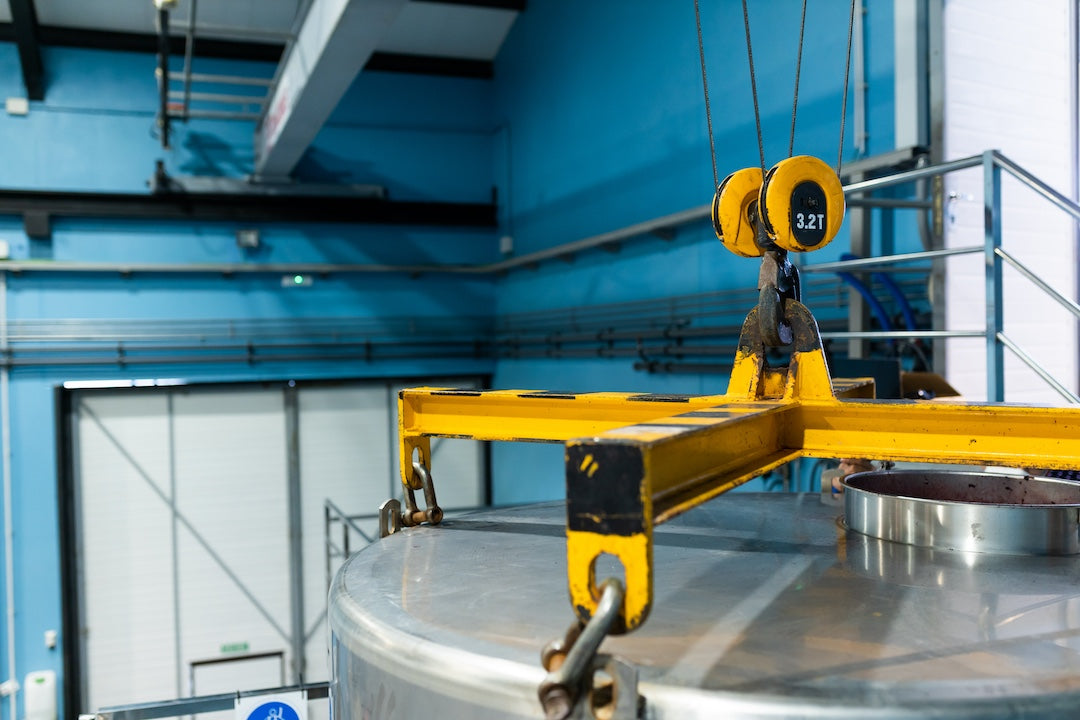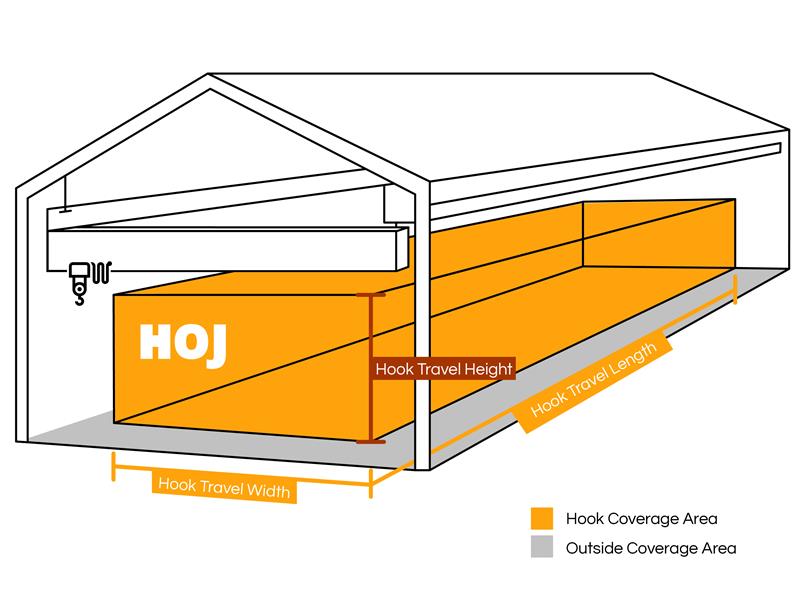Your Cart is Empty

Don’t pick the wrong hoist: The difference between Chain and Wire Hoists
You need a job done, in this case you need to lift a heavy load in a way that a Pallet jack or a forklift can’t. So, you begin to look at hoists, but nowadays there are so many options you almost need a PhD in mechanical engineering just to order it, not to mention knowing which works best for your needs. All you need to do is pick things up and put them down, so why are hoists made to be so complicated? Here are a few guidelines to follow:
True Vertical Lift
For your jobs that require precision lifting, choose a chain hoist. It is the only hoist that actually has a true vertical lift without any directional sway. Wire rope hoists, on the other hand, have a slight sway to them when lifting a load. This is because of how they are lifting. It lifts with a wire rope that is wrapped around a steel cylinder with grooves which inadvertently introduces a little sway when lifting. This cannot be helped, so if you have ample work room and the sway is not a problem, then you will have no issue with a wire hoist.
Wrong Hoist = Extra Expenses?
Some articles online will say that it is of upmost important that you do not choose the wrong type of hoist otherwise you will incur extra costs. This really is not true. All you need to be thinking about is the object you need to lift, how much room you have available and the frequency the lift will be used. The only time you will be doing damage to yourself is if you try to lift something that surpasses the hoists capacity to lift. Then you would strain or even break your hoist. Not to mention the danger the operators would be in when lifting objects outside of the hoist’s capacity.
Generally speaking (there are always exceptions) you’ll want a chain hoist for lighter loads, say 1/8 ton to 5 tons. The exceptions being the CM Lodestar XL which has a lifting range of 2 to 7 ½ tons, and the CM Power star which has a lifting range of 2-15 tons. Chain hoists also can be easily taken down from where they are mounted and moved to another location which makes chain hoists far more versatile than their wire rope counterparts - especially if the chain hoist has a top hook. If needed, they can be easily attached to a bridge crane, jib crane, gantry crane, or hand-pushed crane. These are great general all-around options for any small factory, garage, maintenance job or workstation. They are sturdy, reliable and – if cared for properly – will last for years to come. If you want to see some options feel free to check out our selection or get in contact with a professional.
Wire rope hoists are used for far heavier loads that a chain hoist is not typically used for. A good range to keep in mind is anywhere from 3 to 30 tons. A lot less mobile than its chain hoist brother, the wire rope hoist is a great option if you don’t plan on moving it. Constant work in extreme environments lifting loads to extra high heights is where this hoist shines. Typical locations where this hoist can be found are raw material production facilities, foundries or within the steel service industry.
Consider your Budget
So how do we recommend digesting all this information and applying it? First and foremost, ask yourself “What’s my budget”? This is one of the most important questions you can ask yourself because it will eliminate the vast majority of your options out there. Next, consider what you need the hoist to do, figure out what your minimum requirements are. Future proof yourself by considering how that job might change in the future - will the loads you need lifted get lighter, heavier or stay the same? At the end of this article, we have put together a checklist so you can easily gather the information you need to order the right hoist.
Duty ratings
One last point to keep in mind are duty ratings. There are 3 classifications, FEM (European Federation of Materials), HMI (Hoist Manufacturer’s Institute) and CMAA (Crane Manufacturer’s Association of America). FEM rating looks at the load spectrum and daily operating time of the hoist – this is not used often in the USA. HMI looks at a hoists number of lifts possible per hour, the average distance of vertical movement, and the lifting frequency of the load. For the HMI duty rating, the specifications range from H1-H4, with H4 indicating high volume heavy loads. CMAA Bases the number of lift cycles accompanied by its average load intensity. CMAA classes range from A-Class to F-Class, with F-Class being the heaviest.
This is just a little bit of advice to help you on your journey to understanding the world of hoists a little better. Knowing this information will put you well on your way to ordering the right hoist for the job. In addition to hoists, Hoj Innovations supplies hundreds of companies - from around the USA - with all of their warehousing needs. Be sure to check us out at Hoj.net.
Ordering
So, you need to order a chain hoist. Here is a quick list of information you should gather to make the process seamless:
- If you want it to match an existing hoist
Provide the Following:
- Serial Number
- Model #
- Brand
- That is all we need to know to order the same hoist
- What tonnage do you need?
- How many lift feet do you need? (maybe some information on how to measure this?
- Requires professional analysis, please contact for more information
- How fast do you need it to lift?
- (Units in FPM (feet per minute))
- What power requirements do you have? (Single or 3 Phase)
- Single Phase uses more Amps (Usually not an issue unless you have a facility that draws an excessive number of Amps)
- Lug mount or a Hook mount?
- Lug mounts have a smaller headroom but cannot be easily moved.
- Hook mounts have a larger headroom, and the hook allows for the hoist to be moved easily.
- Do you need a trolley?
- Do you need a push/pull or powered trolley?
- If you need a hoist with a tonnage over 3 tons, we recommend at least a geared trolley.
- Will the trolley attach to a W-Beam or an S-Beam?
If you obtain all that information you are more than ready to order the hoist to match your needs.











